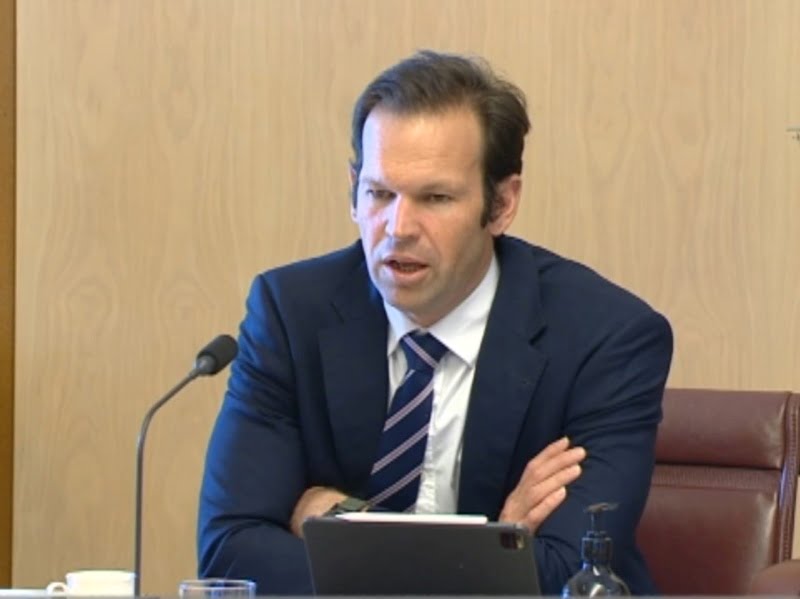Coalition senators have accused the CSIRO of “misleading” the public on the cost of nuclear power generation, claiming it has not incorporated enough data in its modelling and its research partners may be conflicted.
The national science agency defended its annual energy costing report – often held as evidence of the enormous upfront costs of an Australian nuclear power industry – by reiterating it uses only data from completed projects.
The agency said it will add more data when available but, in the meantime, would not incorporate nuclear vendors’ claims — the “lowest quality data” — into the work.

At a Senate inquiry into a bill that would remove the prohibition on nuclear power, the CSIRO’s senior energy scientists and economists were questioned about the agency’s GenCost report.
The report, running since 2018, has consistently shown renewable energy from a mix of solar and onshore wind remains by far the cheapest source of new-build electricity generation in Australia.
The Albanese government and others opposed to lifting prohibitions to allow a nuclear power industry have pointed to the report as evidence of the high upfront costs of nuclear.
Other modelling has shown certain nuclear technology can be a relatively cheap option in some countries, but only limited data exists for the form of nuclear being pushed in Australia’s current debate, small modular reactors (SMRs).
Only two SMRs are known to operate in the world, located in Russia and China, and both have experienced cost blowouts and delays.
According to the CSIRO, even allowing for nuclear SMR capital costs to halve from where they are today, its cost per megawatt hour in 2030 would range from $130-311, compared to $83 per megawatt hour for renewables.
The CSIRO’s GenCost reports have a key principle of high-quality data and do not preference energy technologies but do rely on stakeholder input to decide exactly what to explore. The reports’ nuclear focus has been on SMRs rather than the large-scale nuclear reactors that are considered unfeasible in Australia because of long build times, costs and the contingency problems when one goes offline for maintenance.
Data on SMRs is in short supply, however, with the reports repeatedly relying on the Natural Resources Canada’s SMR Roadmap written in 2019.
While a large international cost appraisal project is underway and Australian experts are contributing to it, it won’t be released for at least another year.
Nuclear proponents and vendors have filled the gap with claims of lower costs than the Canadian estimates, but the CSIRO is concerned about the data quality because none of the projects have actually been built.
“Invariably [the claim] just traces back to another vendor estimate,” lead author of the GenCost report and the CSIRO’s energy economist Paul Graham told the Senate inquiry on Monday.
“And we regard vendor estimates as the lowest quality data. We don’t think they are an improvement on the Canadian Roadmap. And that’s why so far, we haven’t found any new data to include.”
Vendor data is not used for modelling other energy sources in the CSIRO report, with the agency often using engineering consultancy Aurecon to track projects that have either been completed or are at financial close.
Coalition Senators behind a bill to lift prohibitions on nuclear attacked the CSIRO report on Monday and the use of Aurecon. They claimed the report is “cherry picking” certain technologies, is “misleading” the public, and “doesn’t have much bearing on the real world”.
“It is not just about SMRs, and falling back on that as an argument is misleading and deceptive to the Australian people,” Liberal Senator Hollie Hughes said.
“There are other forms of nuclear energy that are being rolled out and relied upon… To keep falling back on the SMR is deceptive to the Australian people. And as a government agency, I encourage you to look more broadly at the issue.”
Victorian Liberal Senator David Van said the CSIRO’s estimates on nuclear costs are a “very incomplete process” and questioned why hydrogen electrolyser technology costings had been included but the report would not consider recent nuclear projects at the final investment stage.
“I would argue that you are cherry picking some technologies and wilfully ignoring others,” he said.
CSIRO’s executive director for environment, energy and resources Dr Peter Mayfield explained hydrogen electrolysers are already widely deployed and used in projects that are built much more quickly, returning more robust data for the report.
Dr Mayfield added the history of the energy industry meant cost blow outs can’t be ruled out for nuclear power.
“Broader industry experience is that many projects blow out well beyond the [final investment decision] approval costs,” he said. “So that’s why, to get the integrity of the data, we are looking for actual builds where you see what it actually does cost to build it.”
Queensland LNP Senator Matt Canavan, who introduced the bill to remove prohibitions, questioned the use of Aurecon as a partner for data collection because the engineering consultancy also engages renewable energy companies.
“Your report is being used to guide government policy and the provision of billions of dollars of government funding,” Senator Canavan told the CSIRO’s Dr Graham.
“So obviously they have an incentive [to endorse renewable energy].”
Aurecon is “close to real projects” and its report goes through a consultation process that invites scrutiny to ensure “the numbers stack up”, Dr Graham said.
“There’s a very vibrant community associated with [the Australian Energy Market Operator]. It will let you know straight away if something doesn’t look right. So, we’re satisfied that there’s enough checks and balances on that.”
The committee probing the bill from the conservative senators has received nearly 150 submissions. It is expected to deliver a final report by mid-June.
Do you know more? Contact James Riley via Email.

